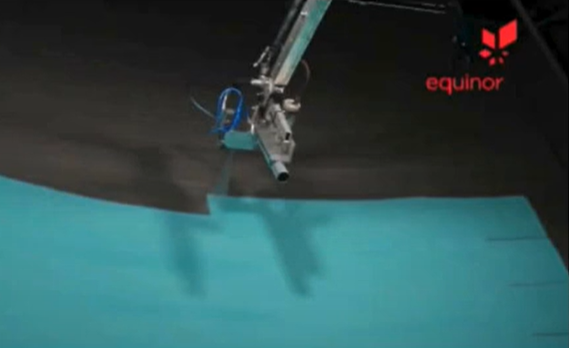How Equinor Uses Drones and Robotics
/A recent webinar—part of the HOIS Digitalisation Forum—highlighted how Equinor is using drones and robots across its value chain. Geir Tore Knudsen, Leading Advisor for Inspection Technology at Equinor, shared Equinor’s approach to robotics, showed examples of drones and robots in action, and discussed challenges to implementing and scaling these technologies. From enhancing safety to optimizing costs, these technologies are becoming indispensable in operations both offshore and onshore.
Equinor’s Robotics Strategy
Equinor, a broad energy company with more than 23,000 employees in 30+ countries, has a clear strategy: always safe, high value, and low carbon. Robotics and drones play a pivotal role in achieving these goals by minimizing risks, reducing costs, and ensuring higher-quality data collection. These technologies are especially valuable in environments that are difficult, dangerous, or impractical for human workers—like subsea operations, confined spaces, and elevated structures.
From Equinor
Safety First: Robotics in Hazardous Areas
One of the most significant advantages of robotic technology is its ability to keep humans out of hazardous situations. Whether it's inspecting subsea structures, confined spaces, or working at heights, robots and drones reduce human exposure to risks while still delivering precise results.
Equinor prioritizes safety through these technologies, with a focus on minimizing health, safety, and environmental (HSE) risks. Incorporating robotics allows Equinor to adhere to its safety protocols more effectively, especially following lifesaving rules, including avoiding confined spaces and working at heights.
Cost Efficiency and Data Quality
Beyond safety, robotics offers clear financial benefits. By using drones and robots for inspections, Equinor avoids costly and time-consuming support activities like scaffolding and equipment shutdowns. This translates to significant savings, especially in long-term, high-value operations.
Moreover, using robots equipped with advanced sensors improves data quality, providing more detailed and accurate insights compared to traditional methods.
Equinor has shifted its approach to prioritize robotics, aiming to first explore automated solutions before resorting to manual, traditional methods. Knudsen said the use of automated systems is now preferred if the data quality is at least as good as that of traditional methods.
Robotic Solutions in Action: From Subsea to Skies
Robotics is integrated throughout Equinor's operations, from deep subsea explorations to high-altitude inspections. Here are examples Knudsen discussed in the webinar.
1. Subsea Robots: For years, remotely operated vehicles (ROVs) have been used to inspect deep subsea structures. Equinor is now advancing this technology by deploying resident ROVs that remain underwater for extended periods, reducing the need for costly offshore vessel operations.
2. Shallow Waters and Splash Zones: Mini-ROVs are employed for various inspections in shallower waters, such as monitoring seawater intakes, ship hulls, and water tanks. Equinor uses different solutions in the challenging splash zone—where water meets the air—to ensure structures and risers are inspected effectively.
3. Topside and Onshore Assets: Belt-driven and legged robots are deployed for topside inspections and onshore maintenance tasks. These robots are ideal for jobs characterized by the Four D's: dirty, dull, distant, and dangerous. For example, welding robots like "Weldar" perform repairs on in-service process equipment, reducing downtime and boosting efficiency.
4. Confined Spaces: Equinor has developed modular robotic systems like "Markus" to handle complex tasks like painting and welding in confined spaces. And crawlers with high-definition cameras and thickness measurement tools can inspect the internal walls of tanks and vessels, ensuring detailed assessments in hard-to-reach areas.
5. Drones for Inspection and Transport: Since 2012, Equinor has expanded its drone use for internal and external inspections. Drones are especially valuable for inspecting flare stacks, confined spaces, and offshore installations where scaffolding and shutdowns would otherwise be necessary. Furthermore, drones are now being used for light cargo transport between offshore platforms, reducing the need for boats and helicopters.
Future Innovations: Autonomy and Beyond
As drone technology rapidly evolves, Equinor anticipates even greater integration of autonomous solutions. The company is exploring drone-in-a-box solutions that can perform routine inspections, monitor perimeter areas, and act as first responders. By automating more tasks and improving the quality of data gathered, these innovations will enhance both safety and operational efficiency.
Challenges and Acceptance
Implementing robotic solutions has not come without its challenges. Initially, users were hesitant to adopt new technologies, preferring familiar methods. However, as the quality and reliability of robotic systems improved, Equinor has seen broader acceptance. Today, the company actively embraces robotic technologies, integrating them into processes where they can deliver safer, more efficient operations.
The Road Ahead
Equinor’s journey with robotics is far from over. The company continues to explore new ways to incorporate these technologies into its operations, aiming for safer, more efficient processes that yield better data.
By embracing automation, the company not only improves operational efficiency but also upholds its commitment to safety and sustainability.
Watch the entire recording of this webinar and others from the HOIS Digitalisation Forum on YouTube.





